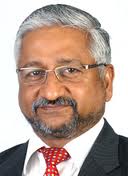India’s ambitious renewable energy target of 175 gigawatts by 2022 will take significant support from a well-developed national energy grid to achieve. Against this backdrop, Prakash Nayak, the Chairman of IET India Power Engineers’ Panel, responds to queries raised by Greentechlead.com on the status and preparedness of the grid in India.
What is the current status of the national power grid in India in terms of its ability to evacuate and manage output from renewable energy projects?
Integrating renewable energy with the grid calls for proportionally reducing or increasing conventional energy production to accommodate renewable energy optimally. Variability in power from clean energy sources poses a challenge for this. The grid is currently deficient in such support systems for energy management.
It takes real time renewable energy monitoring next to load despatch centres at state-, regional- and national-level to facilitate optimal uptake of clean energy.
The addition of weather forecasting-based simulation tools backed by historical data concerning generation of renewable energy can help manage output from renewable energy projects.
It is becoming mandatory for utility-scale power generating stations to connect to the nearby load despatch centers. Such measures will help better uptake of renewable energy.
What more is required in terms of infrastructure to support the targeted growth of 175 gigawatt of renewable energy by 2022 in India?
Multiple infrastructure investments are required to reach the target. First, we have to either enhance the capacity or lay additional transmission line from bulk generation stations based on transmission capacity of the connected lines. Second, we have to add renewable monitoring stations beside each load despatch center at the state-, regional- and national-level.
It would be beneficial to use energy closer to the place where it is generated. Proper transmission planning could help this. Over 200 million people in remote parts of India are still without power. There is need for distributed generation and micro grid projects that are based on adaptability and inclusive approach wherein consumers can also become producers of electricity.
What are the metering technologies currently deployed in the Indian renewable energy industry and what is desirable? Where does indigenous technology stand in the market? How competitive are the products?
Many utilities have already adopted smart metering in their network. Most important aspect is remote monitoring and control, and integration with real-time SCADA system.
Many indigenous technologies — in-house design or technology transfer from developed countries — are already in place.
Meter technologies have gone through many development cycles and are at present in a mature state. The speed of computing and communication capabilities with industry standard protocols is being deployed. Theses indigenous products are much more competitive and some of them are able to compete on parameters including technology, quality and performance in the export market.
However, the affordability of these meters is still a concern in domestic and LT consumer level. One smart grid initiative was focused on developing affordable low cost smart meters, similar to evolved mobile phone technology.
Energy storage is a sector with growing importance in the clean energy industry. What is the current status of its deployment in India? What technologies are being favored in the country and what is the status of indigenous technology in the sector?
The major issue with clean energy is variability and the challenge for engineers and power system operators has always been the effective use of variable energy.
Besides pump storage, storage of thermal energy in molten salt is finding application in the industry, among other things. Battery storage is being adopted by many countries.
But one area in which innovation is required is life of these storage devices. Technology to increase life of storage devices will also help improve energy density.
Recently American electric vehicle manufacturer Tesla showcased battery walls as energy storage device. The best-in-class technology should be able to bring in cost-effective energy storage.
There are some pilot projects in India, too, such as energy storage through bulk battery banks, which was introduced in other parts of the world a few years ago. Central Power Grid Corporation is already working on this technology.
ALSO READ: Interview: Prakash Nayak, Chairman – Power Engineers Panel
India is targeting 175 gigawatt of renewable energy capacity by 2022. Is there any technological development that holds the promise of significantly cutting the time required to attain the target? Will 175 gigawatt be a sound renewable energy target if it is achieved in 2022?
The electricity sector in India had an installed capacity of 267.637 GW as on end March 2015. We generated around 1048.5 BU for the period April 2014–March 2015. Renewable power plants constituted 27.25 percent of total installed capacity and non-renewable power plants constituted the remaining 72.75 percent.
India is talking about 175 GW, of which 100GW is projected to be from solar projects alone. This is doable but requires tremendous efforts in terms policy guidelines and support. Going by the news and announcements, the government is already working on this. However, it is imperative that the mindset of people working in this sector at the ground level also becomes favorable toward driving more renewable energy.
Considering the fact that per capita consumption of electricity in India is lower compared with other countries despite cheaper tariff, the country requires resources and drive to reach the target. Focused initiatives to improve skill set, project management capabilities and building expertise within the industry will also help.
editor@greentechlead.com

